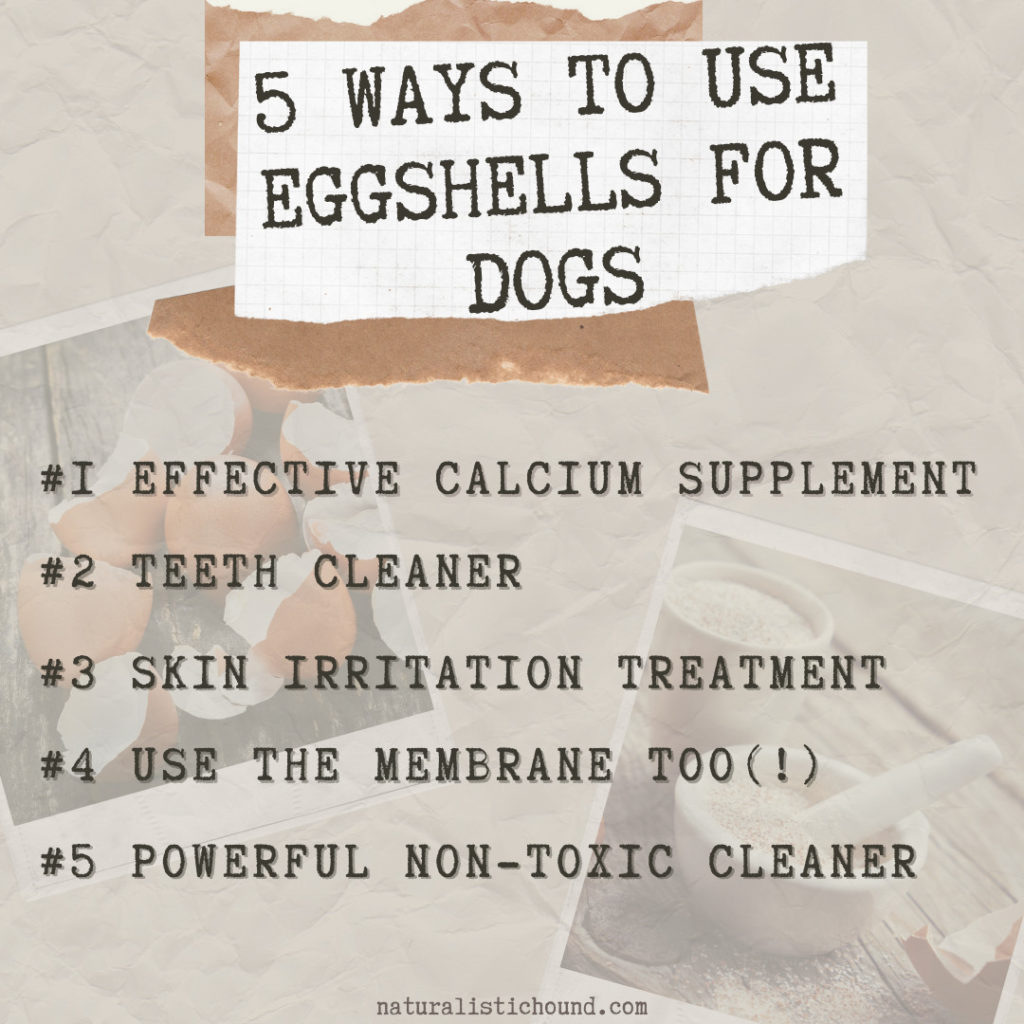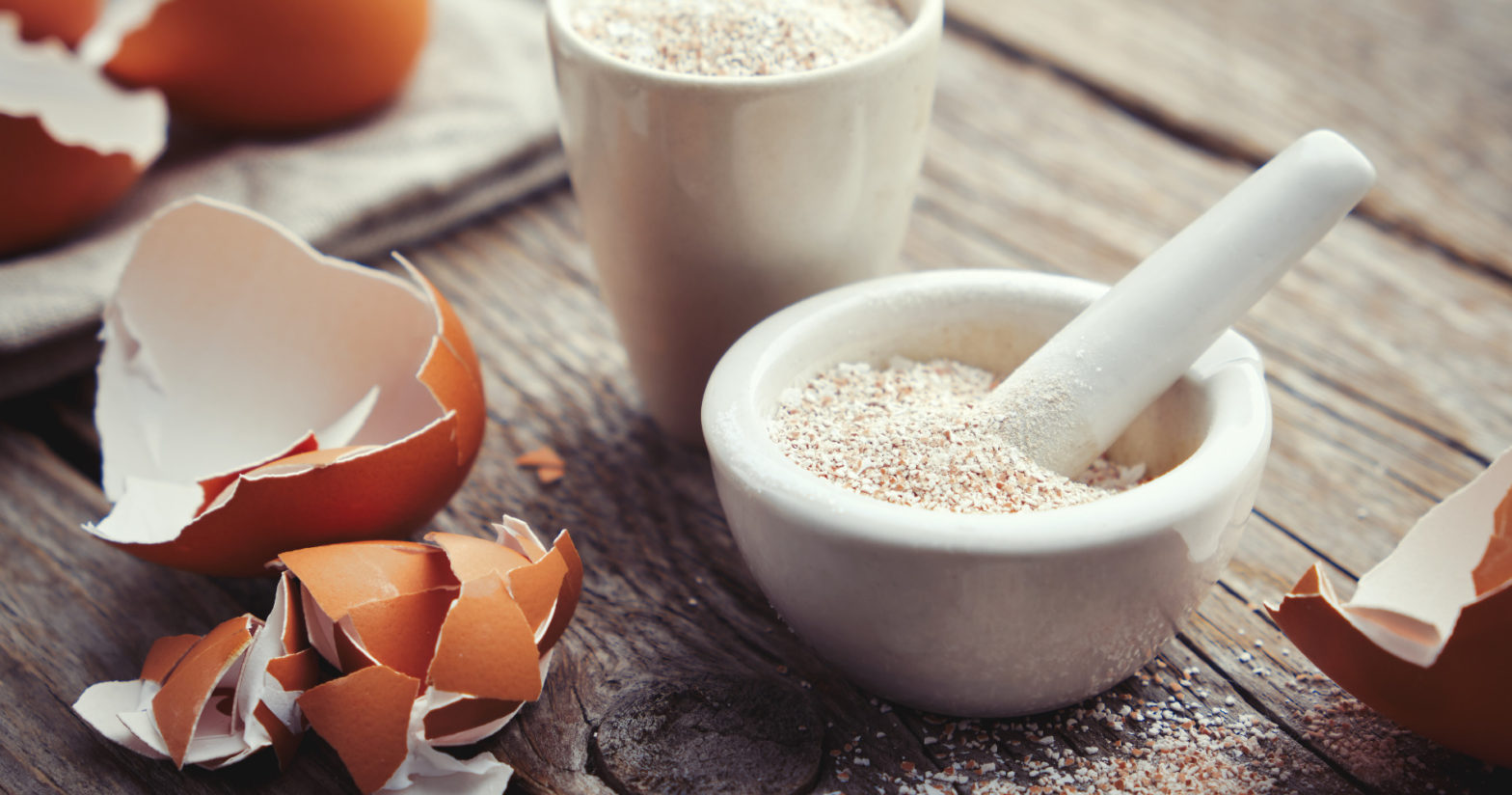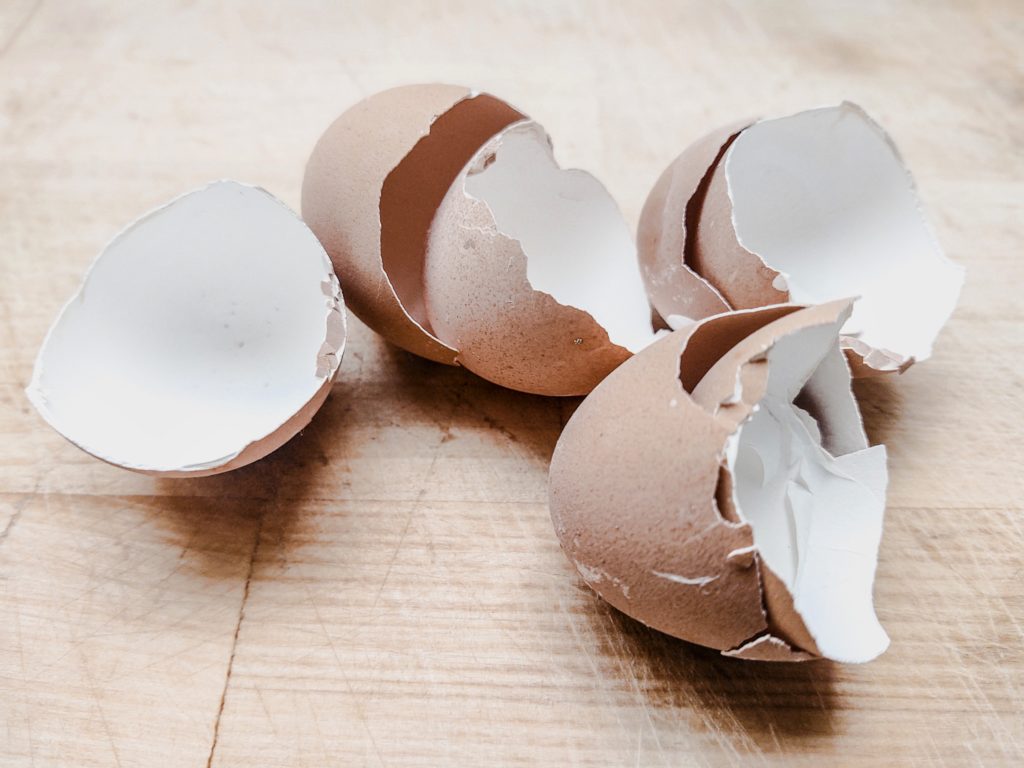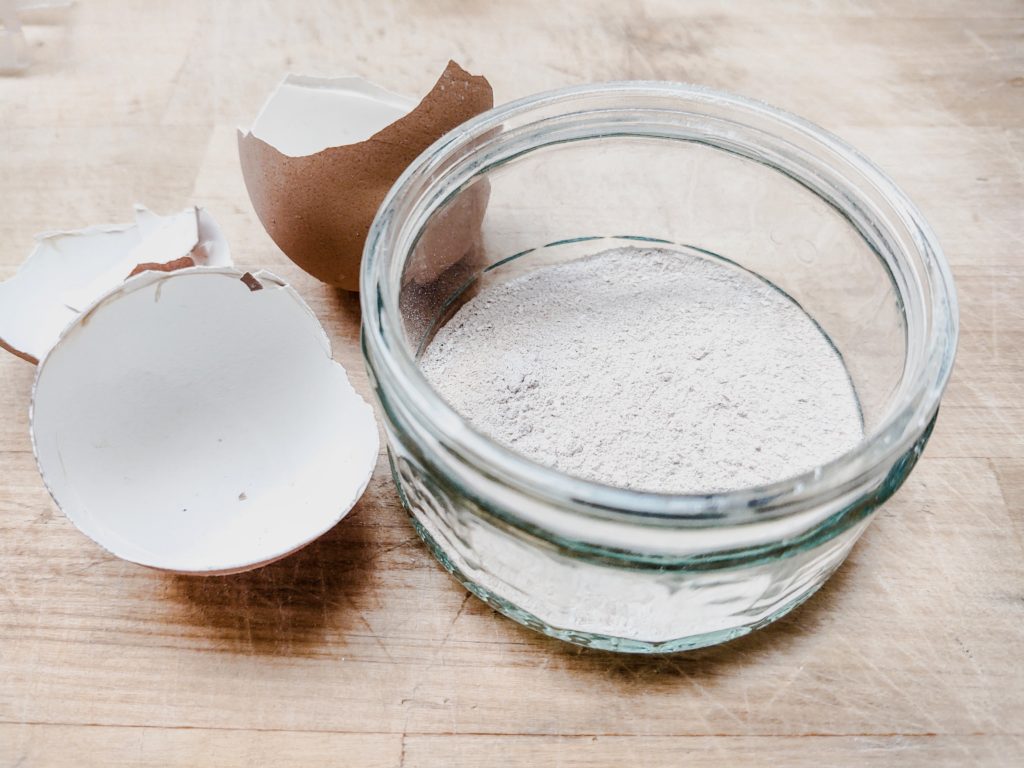An eggshell is the hard, outer covering of an egg.
It consists mostly of calcium carbonate, a common form of calcium. The rest is made up of protein and it also contains other microelements like boron, magnesium, manganese, copper, iron, molybdenum, sulfur, zinc, etc.
Here are some of the amazing ways eggshells can be used to help and support your dog’s health…

Top Uses Of Eggshells For Our Dogs
#1 Eggshell Powder As Effective Calcium Supplement
In the past decades, eggshell powder prepared from hen eggs has been used as a natural calcium supplement for both humans and pets[1].
Eggshells are roughly 40% calcium. A single eggshell contains 2.07g (± 0.18g) of calcium (just half an eggshell could provide enough calcium to meet the daily requirements for adult human beings!).
When eaten it increases bone density and regular use greatly prevents bone diseases.
Calcium carbonate is the most common form of calcium in nature and it is also the cheapest and most widely available form of calcium in supplements.
Moreover, dogs’ bodies can easily absorb eggshell powder; it is absorbed as effectively, or even better, as pure calcium carbonate[2].
In addition to calcium and protein, eggshells also contain small amounts of other minerals, including strontium, fluoride, magnesium and selenium. Just like calcium, these minerals may play a role in bone health [3] [4] [5].
You must add this essential mineral to all homemade cooked diets and to raw diets that do not include raw meaty bones.
As important as it is to add calcium to homemade diets, it is equally important not to overfeed calcium, especially for puppies and pregnant females. Also, excess calcium binds many minerals, so adding too much decreases the nutritional value of what you feed. There are also concerned that excessive intake of calcium may cause health problems, such as kidney stones, and potentially raise the risk of heart disease[6].
This shouldn’t discourage you from supply calcium to your dog though, as calcium deficiencies have very dangerous consequences.
Like everything, moderation is the key.
How Much Eggshell Powder?
A general rule is to add approximately ½ teaspoon of eggshell powder, per pound \ 450g of fresh food. If you feed a combination of fresh and commercial foods, add calcium only to the amount of fresh food, do not factor in the commercial food.
Below I will show you how quick & easy is to prepare your own eggshell powder.
#2 Eggshell Powder As Teeth Cleaner
Method 1 – Eggshell powder is also great for teeth and gums’ health.
Mix 1 tsp of eggshell powder with unrefined organic coconut oil to form a paste. Use this paste to brush your dog’s teeth, it will help get rid of plaque and tartar from teeth.
Method 2 – Rub a small amount of eggshell powder against your dog’s teeth every morning. Eggshells contain calcium and other minerals that strengthen the enamel, makes teeth squeaky clean and eventually, will even help his teeth fight the bacterias that cause gum disease.
Method 3 – Brush your dog’s teeth twice a week with a mixture of activated charcoal powder & eggshell powder (you may add some warm water to form a paste). This will make your dog’s teeth sparkle and gum free of diseases. Activated charcoal binds and absorbs stains on your dog’s teeth. It also acts as a breath freshener, making activated charcoal a perfect ingredient to add to your dog’s teeth cleaning regimen.
#3 Eggshell Powder As Skin Irritation Treatment
Eggshells have a lot of vital nutrients in them that are really good for our adventurous dogs. It shouldn’t be that surprising that they can help with minor skin irritations too!
So the next time your dog’s skin is bothering them, simply put 1 tsp of eggshell powder in a small bowl of organic apple cider vinegar. Let this soak for a day or two days. Dip a cotton ball in this mixture and apply it wherever needed on the skin, leave it on for 30 minutes (if possible), rinse and start seeing the results within a few days.
#4 Use the Membrane
The eggshell membrane is located between the eggshell and the egg white. It is easily visible when you peel a boiled egg.
While technically not part of the eggshell, it is usually attached to it. When making eggshell powder at home, there is no need to remove the membrane.
Benefits of the membrane:
- A study from 2018 discovered that eggshell membrane possesses anti-inflammatory and wound healing properties[7]. When you crack an egg you often see the membrane still attached to the shell. The next time your little friend has a cut then reach for the eggshells. Place a piece of the shell on the cut with the membrane on the cut itself. This will give off nutrients to enhance healing for minor cuts and splinters.
- Eggshell membrane mainly consists of protein in the form of collagen. It also contains other substances with known benefits to joint health, including glucosamine, hyaluronic acid and chondroitin.
According to a new study, Eggshell Membrane has been clinically proven to reduce pain and improve function in dogs suffering from joint problems[8].
In short, when you feed an egg to your dog, remember to peel the membrane from the shell too ツ
#5 Eggshell Powder As A Powerful Non-Toxic Cleaner
Dogs lick and sniff everywhere, so it’s important to use pet-friendly cleaning products around the house. The eggshell powder makes a wonderful (and nontoxic!) abrasive. Mix them with a little soapy water for a powerful clean. Add lemon or orange juice for extra anti-grease action.
How to Make Eggshells Powder
When prepared correctly, eggshell powder is considered safe.
Nevertheless, there a couple of points to consider:
First, do not feed large fragments of eggshell as they might injure your dog’s throat and oesophagus. The next paragraph will give you a few tips on how to grind eggshells into powder.
Second, eggshells may be contaminated with bacteria, such as Salmonella enteritidis. When baking eggshells at 100ºC (200ºF) the Salmonella bacterias are destroyed – however, if you prefer an extra layer of safety you can boil the eggshells before baking them. Boiling them can lead to loss of part of the calcium content so only steep for a few minutes.
Quick & Easy Eggshell Powder
You can either make your own eggshell supplements at home or buy pre-made eggshell powder in health food shops / online.
Eggshell powder can be made at home using a pestle and mortar or, for a finer powder, a coffee grinder. Just be sure to crush the eggshells into powder or very small fragments before feeding them.
❶ Rinse the shells.
You can save them in the fridge for a few days or in the freezer for longer until you have collected the desired amount of eggshells.
❷ If necessary defrost the shells.
If necessary boil the eggshells for a few minutes (optional).
Preheat the oven at 100ºC (200ºF).
❸ Place your eggshells on a baking tray and bake them for 20-40 mins (depending on how wet the shells were when placed in the oven).
❹ Once completely dry and crispy remove them from the oven.
❺ If you’re using a coffee grinder, make sure it’s clean before grinding the eggshells (you don’t want any bits of coffee to mix in the eggshell powder).
Grind the eggshells until all large pieces are ground to a powder.
If you don’t have a coffee grinder, a mortar and pestle is also a good way to grind to a powder.
And…That’s It! As promised, Quick & Easy Eggshell Powder Making ツ
[1] Chicken eggshell as a suitable calcium source at home
[2] Effect of 1alpha-hydroxyvitamin D3 and egg-shell calcium on bone metabolism
[3] Mineral, amino acid, and hormonal composition of chicken eggshell powder and the evaluation of its use in human nutrition
[4] Effects of treatment with fluoride on bone mineral density and fracture risk
[5] Selenium Status Is Positively Associated with Bone Mineral Density in Healthy Aging European Men
[6] Calcium supplements: benefits and risks
[7] Processed eggshell membrane powder regulates cellular functions and increases MMP-activity important in early wound healing processes
[8] Effectiveness of NEM® brand eggshell membrane in the treatment of suboptimal joint function in dogs



